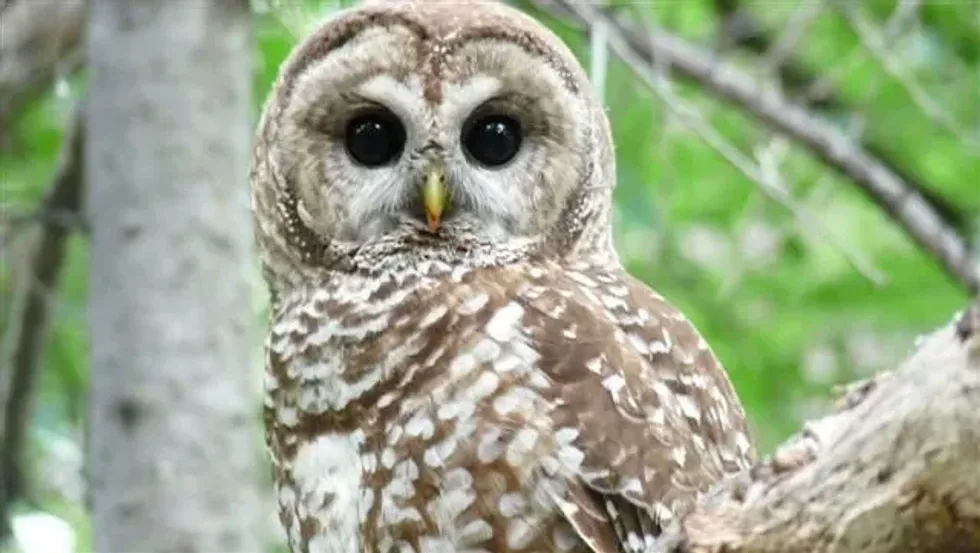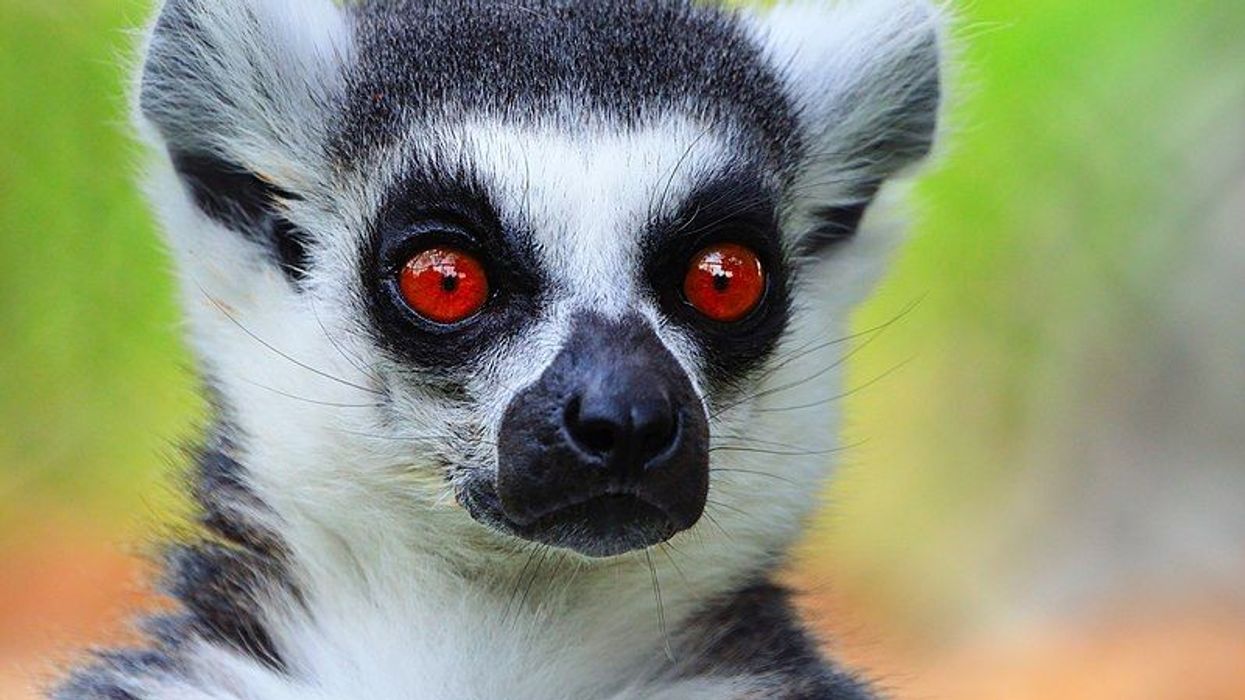The Mexican spotted owl is a native bird of North America, and during the '80s when logging operations were at their peak, biologists estimated that less than 2000 of these birds remained. With a continuous decline in their population due to mining, logging, and wildfires, habitat loss has become a major concern for this species
The Mexican spotted owl has always faced a threat from human interference but it is now facing threats from barred owls that are larger in size and more adaptable than Mexican owls. These barred owls have started to displace Mexican spotted owls from their natural habitat.
If you like these true facts about the Mexican spotted owl, then you'll surely like these facts about the red owl and the northern spotted owl too!
Mexican Spotted Owl Interesting Facts
What type of animal is a Mexican spotted owl?
Mexican spotted owls are one of the largest North American owls and this is a species that is under protection in the United States as they are close to becoming endangered. Unlike other owls, these birds have a dark eyeshade.
What class of animal does a Mexican spotted owl belong to?
The Mexican spotted owl (Strix occidentalis lucida) belongs to the Aves class of animals. The Aves class consists solely of birds these birds belong to the family Ardeidae.
How many Mexican spotted owls are there in the world?
The Mexican spotted owl population around the world is currently at below 2,000 individual birds due to an increase in timber harvest systems and wildland fires, both of which are a danger to the habitat of this bird.
Where does a Mexican spotted owl live?
The typical Mexican spotted owl range is very large when compared to other species of owls. Their range starts from the Rocky Mountains in Colorado and covers both Arizona and New Mexico, as well as Utah and parts of West Texas.
What is a Mexican spotted owl's habitat?
A typical Mexican spotted owl habitat comprises rocky canyons and complex old-growth forests, which are high rise and shaded. This species of owls has also been seen nesting in caves and cliff ledges among canyons. Mexican spotted owls usually build their nests in tree cavities of douglas fir and ponderosa pine trees in an old-growth forest.
Who do Mexican spotted owls live with?
Mexican spotted owls are solitary in nature and only interact with their mates and their young. This species builds its nests a few hundred hectares away from each other. Since these owls are migratory in nature, they can be seen migrating during the winter and the breeding season, traveling towards places with warmer climates.
How long does a Mexican spotted owl live?
The average lifespan of this bird is 15 years in the wild.
How do they reproduce?
Mexican spotted owls mate for life as they are monogamous birds. Their breeding season starts from the month of March, and females lay between two and four eggs. The incubation period for these birds is 30 days, with only females participating in this process while males provide food for the chicks and mothers during this period.
What is their conservation status?
As per the IUCN Red List, the Mexican spotted owl is listed as a Near Threatened species with a continuous decline in its population. This is due to increasing habitat loss by timber harvesting and the introduction of barred owls causing them to have to compete for survival.
Mexican Spotted Owl Fun Facts
What do Mexican spotted owls look like?
Mexican spotted owls are brown in color with patchy white and brown spots across their back, abdomen, and head. These spots on their body are larger in size when compared to other spotted owls. This species of owls with spots has dark eyes and a brown tail with assorted white bands.
How cute are they?
Mexican spotted owls, like most species of owls, are beautiful to look at and are elegant in nature. These owls can be called cute due to their pretty plumage. Owlets are even cuter!
How do they communicate?
Mexican spotted owls produce 13 different types of barking, hooting, and whistling calls. A Mexican spotted owl call is used by males and females to indicate and defend their territory as they need a vast habitat to spend their time in, roosting during the days and foraging for food during the nights.
Hearing the distinctive Mexican spotted owl sound at night is scary enough to spook some people out!
How big is a Mexican spotted owl?
Mexican spotted owls are considered to be one of the largest owl species in North America. Adults can grow up to 16-19 in (41-48 cm) in length and have a wingspan of 42-45 in (107-114 cm). Females are larger and heavier than males, exhibiting reserve sexual dimorphism.
How fast can a Mexican spotted owl fly?
No accurate data is available on the exact speed of these birds but they can fly up to 1,500 hectares within the range of their habitat.
How much does a Mexican spotted owl weigh?
An adult owl weighs up to 19.5-23 oz (547-647 g), with females being slightly larger than males.
What are their male and female names of the species?
At present, no particular names have been assigned to males and females of the species, but a group of owls is called a parliament.
What would you call a baby Mexican spotted owl?
A baby spotted owl is called an owlet. These juveniles are found in high elevation forests surrounded by grasslands. After the young owls are hatched from eggs they start growing feathers after four to five weeks. Up to this point, the young owls are dependent upon their parents for food.
What do they eat?
Owls are nocturnal birds who spend their time roosting during the day and forage for food during the night. The Mexican spotted owl's diet consists of small mammals such as pocket gophers, rats, rabbits, moles, and bats. These birds also feed on insects, reptiles, and other small birds.
Are they dangerous?
No, they are not dangerous at all. These birds are usually docile and will not attack unless provoked.
Would they make a good pet?
No, you can not keep these owls as pets because their conservation status is listed as Near Threatened on the IUCN Red List.
Did you know...
WildEarth Guardians were founded to stop the logging of forests and to protect populations of Mexican spotted owls.
WildEarth Guardians have made an agreement with the U.S. Forest Service which complies with the Mexican Spotted Owl Recovery Plan that includes a few requirements such as conducting annual owl population trend monitoring, surveying long-term trends of the owl's habitat, and creating a forum for teams working on owl management.
This agreement was applied to all 11 national parks in New Mexico and Arizona.
Mexican spotted owls are unique in nature compared to other owls because of their dark-colored eyes. Most owls have red-orange eyes.
What is the difference between the northern spotted owl and the Mexican spotted owl?
The Mexican spotted owl is native to the canyons and mountain ranges of the southwestern US including Arizona, western Texas, and New Mexico. The northern spotted owl is found in southwestern British Columbia to Washington and from California to Oregon.
The Strix occidentalis lucida plumage and habitat distribution differentiate them from the Strix occidentalis caurina birds. Both are subspecies of the spotted owl but they are separated from each other geographically.
Do spotted owls mate for life?
Yes, these owls mate for life. They are monogamous in nature and will spend their entire life with just one mate.
Here at Kidadl, we have carefully created lots of interesting family-friendly animal facts for everyone to discover! For more relatable content, check out these short-eared owl facts and burrowing owl facts for kids.
You can even occupy yourself at home by coloring in one of our free printable Mexican spotted owl coloring pages.










